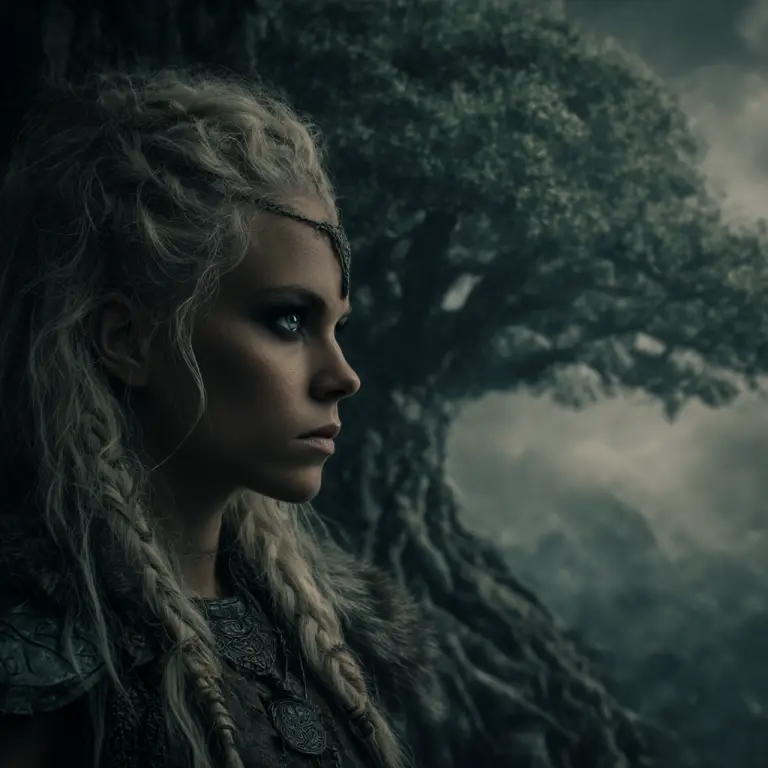Gerðr, sometimes written as Gerd or Gerth, is a prominent figure in Norse mythology known as a beautiful jötunn or giantess associated with fertility, the earth, and natural abundance. She is best known for being the wife of the god Freyr, one of the Vanir gods linked to prosperity, agriculture, and love. Her story is primarily told in the Poetic Edda and Prose Edda, where she is portrayed as both otherworldly and deeply connected to the natural world.
Origins and Family
Gerðr is the daughter of the giant Gymir and the mountain giantess Aurboða. Her family belongs to the race of jötnar, beings who often represent the primal forces of nature in Norse mythology. Though the gods and giants were frequently in conflict, they were also closely related through marriage and bloodlines, and Gerðr’s union with Freyr symbolises a joining between the divine and the natural realms.
The Courtship of Gerðr and Freyr
The tale of Freyr and Gerðr is one of the most well-known love stories in Norse myth. According to the Prose Edda, Freyr once sat on Odin’s high seat, Hlidskjalf, from which he could see into all the worlds. While gazing into Jötunheim, the land of the giants, he saw Gerðr walking through her father’s halls, and her beauty shone so brightly that it illuminated the skies and filled him with longing.
Freyr fell deeply in love, but his desire caused him great sorrow. He sent his servant, Skírnir, to woo Gerðr on his behalf. Skírnir offered her rich gifts, including golden apples and the magical sword of Freyr himself, but Gerðr at first refused his offers. Only after Skírnir threatened her with terrible curses and enchantments did she agree to meet Freyr. She promised to come to him in nine nights’ time at a place called Barri, a peaceful grove, where their union would take place.
Symbolism and Interpretation
Gerðr is often viewed as a personification of the fertile earth, while Freyr represents the life-giving sun and rain. Their union symbolises the meeting of earth and sky, a theme common in ancient fertility myths. The waiting period of nine nights before their meeting may represent the agricultural cycle or the transition from winter to spring, when the earth (Gerðr) finally yields to the warmth and fertility brought by the sun (Freyr).
In some interpretations, Gerðr’s initial resistance to Freyr symbolises the reluctance of the frozen earth to awaken after winter, eventually giving way to the renewing power of spring. This makes their story not just a romantic tale, but a myth explaining natural processes and the balance between passion, power, and nature’s cycles.
Gerðr in Later Tradition and Modern Culture
Gerðr’s story appears in several Old Norse sources, including Skírnismál in the Poetic Edda, and Snorri Sturluson’s Gylfaginning in the Prose Edda. She is mentioned in various skaldic poems and later retellings that highlight her beauty, strength, and mysterious nature.
In modern times, Gerðr continues to appear in literature, art, and neopagan traditions. She is often honoured as a goddess or spirit of the earth, fertility, and sensual love. In some interpretations, she is seen as an independent figure who maintains her dignity and power despite the coercion used to win her hand.



